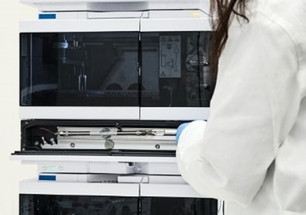Posted by Chrom Tech on 15th Oct 2025
HPLC Column Care and Maintenance
The HPLC column is one of the most critical and sensitive components in your chromatography system. As a consumable, it will eventually require replacement—but proper care and maintenance can dramatically extend its lifespan and ensure consistent, reliable results. Understanding the early signs of column issues allows you to intervene before performance declines.
Common indicators that your HPLC problems may be column-related include:
- Unusually high system pressure
- Distorted peak shapes (splitting or tailing)
- Unexpected shifts in retention time or selectivity
While these symptoms may also originate from instrument or method issues, the column is often the first place to look when troubleshooting system performance.
Diagnosing High System Pressure or Excess Backpressure
A significant increase in HPLC system pressure can be caused by several factors, including a plugged inlet frit, column contamination, or a blockage elsewhere in the system. Before assuming the column is at fault, compare system pressure readings with and without the column installed. If the high pressure persists without the column, the issue lies elsewhere in the flow path (such as the pump, injector, or tubing).
If the pressure increase is isolated to the column, follow your manufacturer’s cleaning instructions. In most cases, flushing with progressively stronger solvents can help remove contaminants and restore performance. Always ensure that the detector is disconnected from the flow path before cleaning.
General Cleaning Procedure for Reversed-Phase HPLC Columns
Use at least ten times the column volume of each solvent, in order of increasing strength:
- Start with the mobile phase without buffer salts (water or aqueous/organic mixture)
- Flush with 100% organic solvent (methanol or acetonitrile)
- If pressure remains high, try stronger cleaning solutions:
- 75% acetonitrile : 25% isopropanol
- 100% isopropanol
- 100% methylene chloride*
- 100% hexane*
*When using methylene chloride or hexane, always flush with isopropanol before returning to reversed-phase mobile phase conditions.
To prevent future backpressure issues, always use HPLC-grade solvents, filter all buffered mobile phases, and install an in-line filter between the injector and column. This helps trap particulates before they reach the analytical column. Chrom Tech provides a complete range of HPLC supplies and filtration accessories to maintain clean, consistent flow paths.
Undesirable Peak Shape or Retention Changes
Poor peak shape—such as splitting or tailing—can result from several column-related issues, including contamination, partially plugged frits, voids in the packing bed, or mismatched injection solvent strength. For best results:
- Filter all samples and solvents to prevent particulates from entering the system.
- Ensure the injection solvent is similar in polarity and strength to the initial mobile phase.
- Regularly check fittings and tubing for leaks or voids.
Shifts in retention or selectivity over time may indicate an aging column or system instability. Common causes include insufficient column equilibration, changes in mobile phase composition or flow rate, column contamination, or temperature fluctuations. If consistent retention cannot be restored after cleaning, the column may be nearing the end of its usable life.
Tips for Extending HPLC Column Lifespan
- Always use HPLC-grade solvents to minimize particulate and chemical contamination.
- Filter all buffers and mobile phases before use.
- Use guard columns or in-line filters to trap debris before it reaches the analytical column.
- Store columns in appropriate solvents according to manufacturer recommendations.
- Avoid sudden solvent or pressure changes during operation.
- Backflush the column if recommended by the manufacturer for your specific phase.
Summary
Proper column care and maintenance are key to achieving reliable, reproducible chromatographic results and extending column lifetime. Always follow the manufacturer’s guidelines, maintain clean solvents and filters, and monitor system performance regularly. Even with optimal care, all columns eventually degrade—when that time comes, Chrom Tech offers a full line of replacement HPLC columns and accessories to keep your laboratory running efficiently.
For technical assistance, column recommendations, or troubleshooting advice, please contact Chrom Tech—our experts are ready to help ensure optimal HPLC performance.
Frequently Asked Questions About HPLC Column Maintenance
How often should I clean my HPLC column?
Routine cleaning should be performed whenever you notice increased backpressure, poor peak shape, or changes in retention. Periodic flushing with strong solvents can help prevent buildup and extend column life.
What causes high backpressure in an HPLC column?
Common causes include a plugged inlet frit, column contamination, precipitated buffer salts, or system blockages. Always test pressure with and without the column to isolate the issue.
Can I backflush my HPLC column?
Some columns allow backflushing to remove particulates trapped at the inlet frit, but only if the manufacturer specifies it. Always consult your column’s documentation before attempting backflushing.

